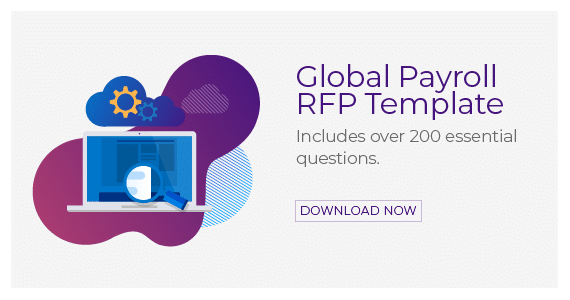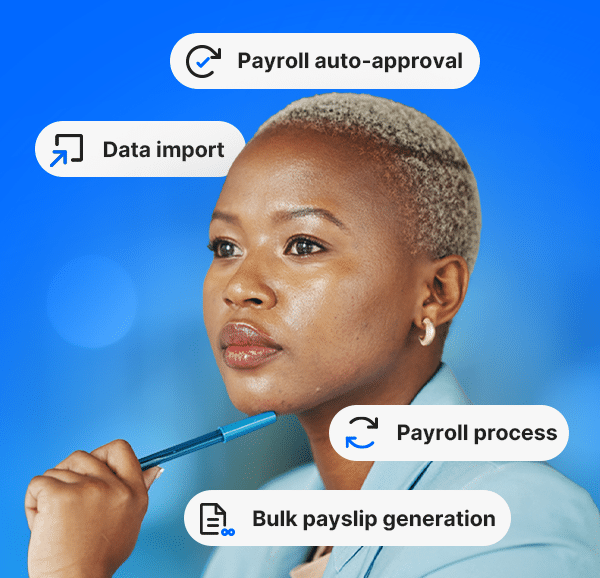Because of the way business has evolved in recent years, many organizations have ended up with a piecemeal approach to payroll that isn’t as efficient as it could be.
One particular area of inconsistency is in the relationship between payroll and payments. It remains commonplace that global payroll is run through one platform, while a different provider handles payments, often using payment rails not designed for large-scale payroll cycles.
Back when payroll was a relatively straightforward endeavour, this wasn’t too much of a problem – but times have changed. Payroll is now much more complex (especially in the era of hybrid work and global talent pools), increasingly led by technology, and is expected to play a more strategic role within a business. This means there is no longer room to tolerate any inefficiency between payroll and payments – it’s time for them to come together.
What difference does it make in practice?
The ideal scenario is therefore implementing an end-to-end payroll solution that brings payroll, payments, and funding together in one place. The reasons for doing so are compelling:
You can make payments on time
Working with a separate payment provider means delivery is worked out from when the money is taken from your account, and not when it has to be sent to employees. This means that weekends, bank closures, or technical problems can all result in delays to employees receiving wages into their bank accounts, which can easily cause them significant financial hardship. In a time when reputation and retention are key, many businesses are focusing on eradicating these kinds of stumbling blocks for their employees. And some are even going further in providing alternative payment options and payment methods to turn this into an employee benefit.
You can maximize the use of your working capital
A more integrated approach means that payroll processing and payments can be done on the actual payday, rather than having to build in a 2-3 day gap. This means you can hold onto capital for longer, easing any cash flow concerns and potentially making you more money in interest. This can be especially useful for small businesses.
You can cut back on off-cycle calculations
It’ll be much quicker to run payment cycles when payroll and payments are integrated, and operational admin such as setting up new payees becomes much quicker, too. When these time savings are multiplied across a large number of employees, they represent a significant amount of time that payroll teams can be put to better use (for example, running more detailed checks and data validations).
Why payroll and payments should always sit together
If you take a step back and look at payments and payroll systems from a more objective viewpoint, it’s easy to realize that there’s no good reason for them to operate separately.
When you have two separate systems in operation, there is twice as much administration and management work involved in keeping them running, e.g. having to enter the same data into each system individually. Furthermore, there is also the risk of inconsistencies in data if the two platforms aren’t integrated and synchronized, which is how payroll errors can easily creep in.
If service providers have a global payroll platform with a payment system embedded within it, then these problems disappear. Both functions operate from the same ‘single source of truth’ in terms of data, and any changes to that data will take effect in both areas simultaneously. It also makes it much easier to integrate payroll and payment functions with HR platforms such as HCM software, so that payroll and human resources can better support each other.
There are also benefits to be gained from the perspective of automation and reporting. Only when payroll and payments are brought together can the process of pay be fully automated end-to-end, which is where the benefits of reliability, accuracy, and a lower admin burden can be fully realized. And with all the dots joined together, establishing how payroll is performing in real-time and where improvements can be made to processes is much easier.
In summary
Ultimately, when you adopt a platform that encompasses both payroll and payments, your processes in both areas become quicker, simpler, less prone to error, more automated, and deliver a greater level of insight into how they’re really performing.
What’s more, the lower burden on your payroll team, and outsourcing one unified system instead of two, can also help you cut costs substantially.
These positive impacts can be enjoyed in every business. But it’s in global enterprises, where employees are distributed all over the world, and multiple currencies make payroll and payments highly complex, where the biggest benefits can be found.
CloudPay’s Global Treasury Services are ideal for businesses wanting to get the best of both payments and payroll from a single, user-friendly platform. Learn all about it here.



